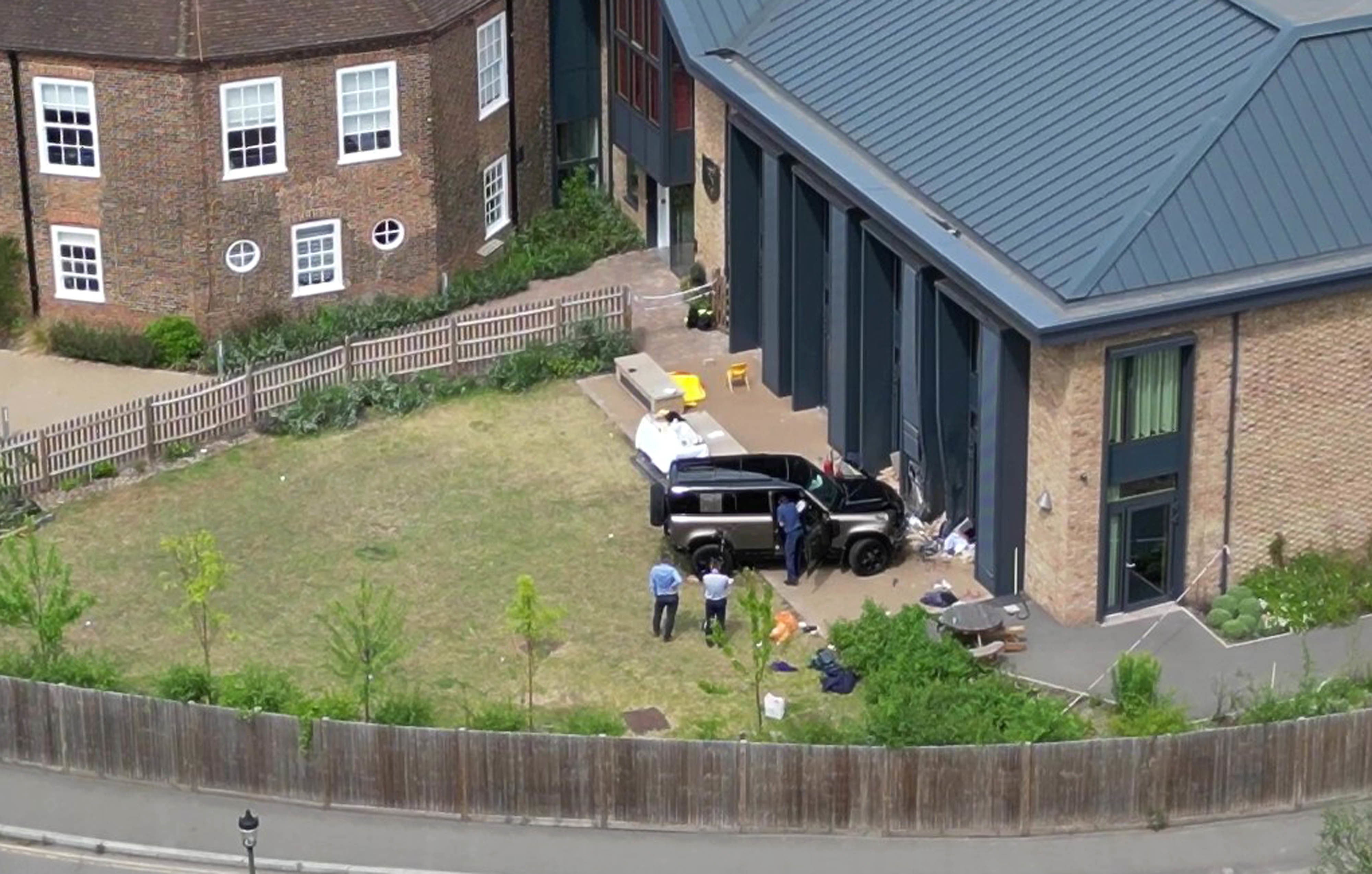We need to talk about how dangerous cars really are
The tragic death of a child in Wimbledon after a Land Rover crashed into a school should make us think seriously about safety, writes Jon Stone. All cars are a risk to life, but the excessive size and weight of SUVs make them even more so


Is it appropriate to talk about the dangers posed by cars in the wake of a horrific incident like the one at a primary school in Wimbledon this week?
At the time of writing, the exact circumstances of what happened are still unclear, but we know that a driver in a Land Rover somehow ploughed through a fence and into a group of children. An eight-year old girl has died and 15 others have been injured, some critically.
I would rather not be writing about this subject so soon after a tragedy like this. But given that five people are killed and 84 seriously injured on Britain’s roads every day, to avoid it after such events would require a permanent vow of silence. The rate of casualties amounts to a tragedy every 16 minutes.
The number of people killed on UK roads fell consistently and dramatically from the mid-1960s, with the gradual introduction of new safety measures. But for more than a decade now, progress has stalled (with the temporary exception of lockdown, when fewer people travelled).
What has changed? The picture is complicated and the stubborn death rate coincides with the scrapping of road safety targets by the 2010 coalition government. But the last 10 years has also seen an aggressive transformation in what we mean when we talk about a car.
The 2010s was the decade in which SUVs took over Britain’s streets. Fuelled by cheap credit, by 2020 these extra-large vehicles accounted for around 40 per cent of new car sales compared to half that proportion a decade ago.
Once mocked in urban settings as “Chelsea tractors”, relentless marketing has sent them mainstream. They can be found lining every well-heeled street in London, bursting out of the bounds of normal sized parking spaces.
Why should you care? Aside from their environmental and climate impact, they are a safety risk. All cars are dangerous – indeed any car in a situation like the one in Wimbledon might have done severe damage. But the excessive size and weight of SUVs mean there is a greater risk of serious harm.
SUVs are two to three times more likely to kill a pedestrian in a collision compared to a regular car, according to 2015 research by the US National Highway Traffic Safety Administration. Their extra height means they tend to inflict injuries higher up the body than a normal car – which are less survivable.
Their extra weight and blindspots increase the risk they pose further, especially for children. The results of a 2022 study in the Journal of Safety Research found that “children are eight times more likely to die when struck by a SUV” compared to a normal passenger car.
Marketing for these vehicles tends to emphasise that an SUV feels safer for the owner to drive than a regular car. But any supposed benefit to people inside the vehicle is effectively an outsourcing of danger to people outside it. Any push to improve road safety has to swim against a growing tide of vehicles that we know are more deadly when they hit someone.
There are certainly some situations for which a Land Rover might be an appropriate vehicle: driving across a farm, perhaps. But for most trips in an urban setting they are a needless extra danger to people who have no say on what car may hit them today. The super-sizing of cars has been a negative change in Britain’s towns and cities, on which nobody was consulted. The question is how the balance can be redressed.
A number of proposals have been floated: should SUVs be regulated out of existence with weight and size limits? Taxed into history, or subjected to a tobacco-style marketing ban? Others have proposed that they should require a special licence for people who really need them.
But if none of those are practical, it may be necessary to accept that this is just what cars are like now, and increasingly try to design them out of city streets.






Join our commenting forum
Join thought-provoking conversations, follow other Independent readers and see their replies
Comments